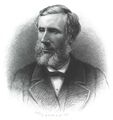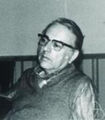Template:Selected anniversaries/December 4: Difference between revisions
No edit summary |
No edit summary |
||
| Line 31: | Line 31: | ||
File:Nathan Jacobson.jpg|link=Nathan Jacobson (nonfiction)|1942: Mathematician and crime-fighter [[Nathan Jacobson (nonfiction)|Nathan Jacobson]] uses structure theory of rings without finiteness conditions to detect and prevent [[crimes against mathematical constants]]. | File:Nathan Jacobson.jpg|link=Nathan Jacobson (nonfiction)|1942: Mathematician and crime-fighter [[Nathan Jacobson (nonfiction)|Nathan Jacobson]] uses structure theory of rings without finiteness conditions to detect and prevent [[crimes against mathematical constants]]. | ||
||Thomas Hunt Morgan (d. December 4, 1945) was an American evolutionary biologist, geneticist, embryologist, and science author who won the Nobel Prize in Physiology or Medicine in 1933 for discoveries elucidating the role that the chromosome plays in heredity. Pic. | |||
||1948 – Frank Benford, American physicist and engineer (b. 1883) | ||1948 – Frank Benford, American physicist and engineer (b. 1883) | ||
Revision as of 17:40, 16 April 2018
1131: Polymath, scholar, mathematician, astronomer, philosopher, and poet Omar Khayyám dies.
1798: Physician and physicist Luigi Galvani dies. In 1780, he discovered that the muscles of dead frogs' legs twitch when struck by an electrical spark.
1820: Physicist John Tyndall dies of chloral hydrate overdose. He studied diamagnetism, and made discoveries in the realms of infrared radiation and the physical properties of air.
1942: Mathematician and crime-fighter Nathan Jacobson uses structure theory of rings without finiteness conditions to detect and prevent crimes against mathematical constants.
1973: The Pioneer 10 space probe makes its closest approach to the planet Jupiter, at a range of about 132,252 kilometers (82,178 mi).
2016: London Has Swollen wins Sundance Film Festival award.





